Sensors and Controls @ DILC: Difference between revisions
No edit summary |
|||
| (9 intermediate revisions by 3 users not shown) | |||
| Line 1: | Line 1: | ||
{| align=" | {| align="top" | ||
| __TOC__ | | __TOC__ | ||
|} | |} | ||
| Line 53: | Line 53: | ||
===[[Web-Available Aircon Control]]=== | ===[[Web-Available Aircon Control]]=== | ||
[[Web-Available_Aircon_Control|More info]] | [[Web-Available_Aircon_Control|More info]] | ||
| Line 77: | Line 84: | ||
==='''Proximity Sensor via Ultrasonic Sonar Module'''=== | ==='''[[Proximity Sensor via Ultrasonic Sonar Module]]'''=== | ||
[[Proximity_Sensor_via_Ultrasonic_Sonar_Module|More Info]] | |||
<br /><br /> | <br /><br /> | ||
| Line 203: | Line 146: | ||
'''Temp/Smoke Sensor''' | '''Temp/Smoke Sensor''' | ||
* Elijah L. Lingbanan (Arduino micro version) | |||
<br /> | |||
Gizduino version | |||
* Rowel Cababat | * Rowel Cababat | ||
* Joven Baluyot | * Joven Baluyot | ||
Latest revision as of 14:28, 4 December 2019
Description
a cost-effective, robust, integrated multi-trigger security and alert system using off-the-shelf or recycled hardware and sensors and open-source software technologies for messaging, video streaming and recording, machine vision, video analytics, thermal and power monitoring and control. It provides multi-channel feedback (Twitter, Email, SMS, etc).
Trigger Events
- heat (aircon not working, fire)
- smoke (smoke detector linked to online alarm system)
- motion (person entering/leaving building or room)
- sound (fans, batteries failing, alarm of non-networked motion or thermal sensors)
- power outage
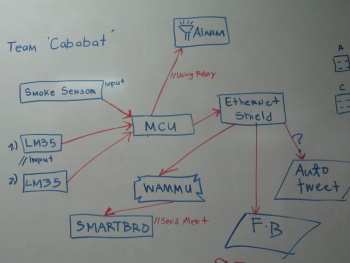
Output
- SMS
- video recording
- log recording
- alarm (sound, light)
- Tweet
- phone dialling
Specs
IP camera, POE (Power Over Ethernet), direct-to-NAS recording (AFP, SAMBA, or NFS), inputs for PIR sensors, Infra Red light for night vision, mechanical IR-Cut Filter Switch (basic surveillance functions incorporated into the camera; camera sends stream when preset event occurs; system send SMS/email), NAS (www.nas4free.org - ZSF file system 4 TB RAID Z2)
Smoke and Temp Module
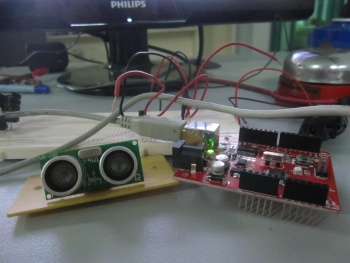
This module monitors room temperature independent of on-board temperature sensors (also monitored) in our servers. It is especially useful in keeping optimal temperature for DILC's data center. Cooling the room too much is a waste of energy. Temperature readings are occasionally verified using 3rd-party thermal instruments.
Controller:
- Gizduino X (see manual)
Sensors:
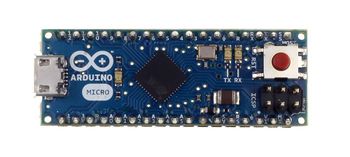
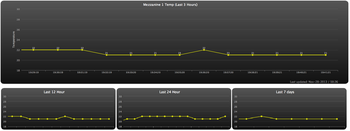
Shields:
- ethernet. See also Arduino Ethernet Shield
Web-Available Aircon Control
Motion Detection and Video Monitoring Module
- combination of mid-, low-end; recycled, old, new cams
- redundant off-site recordings (continuous and motion-activated events) and picture snapshots
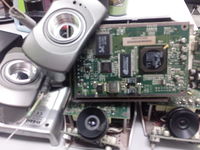

- motion sensors compensate for "blind spots"
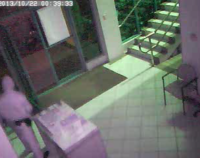
Proximity Sensor via Ultrasonic Sonar Module
Power Monitoring Module
- uses embedded sensors to monitor temperature and power outage and recovery


- redundant power-failure alert system


NAS Module
Messaging Module
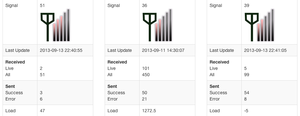
- USB Dongle. See Gammu compatible devices
- Gammu
- Php Mailer
Webapps and Dashboard Module
- Framework Choices: Twisted, Nodejs or alternatives
- to incorporate streams of data from sensors embedded in equipment
Developers
Temperature Sensor Dashboard
- Karen Calado
- Harell Juanico
Temp/Smoke Sensor
- Elijah L. Lingbanan (Arduino micro version)
Gizduino version
- Rowel Cababat
- Joven Baluyot
- Carlito Graza
- Erickson Sombillo
Video Monitoring
- Bonifacio Badilla
- Zandro Paul Abadiac
AC Remote Sensor
- Elijah Lingbanan
- Emannuel Abalain
Proximity Sensor
- Chris Manuel Garcia
Readings
Power Monitoring
Sensors
Video
- Vision Software
- cctv lens calculator - not just any cam please!
- Avtech Products - benchmark projects with prices here.
- iSpy
- Open Platform Video Surveillance System
- ZoneMinder
- OpenCV
- Scene
- wxCam
- Motion. See also this discussion
SMS
See Also


